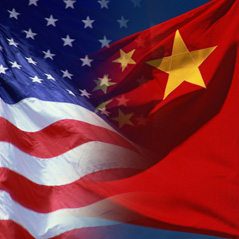Last week, the Chinese government made a critical move toward placing a cap on the amount of carbon dioxide it would emit. That’s a significant decision especially when seen in context of the local emissions permit trading schemes being tried out around the country. Depending on how tight the cap is, this could be a big deal in its own right: China is the world’s largest and fastest-growing emitter. Its citizens are already suffering as a consequence.
But the impact of the Chinese decision could be even broader. Understanding why requires seeing climate change as an issue that’s every bit as much about the structure of international politics as it is about domestic policy or environmental science.
That climate change is a principally international issue should be obvious. Though American CO2 emissions have fallen 13 percent since 2007, we’ve just hit 400 atmospheric CO2 parts per million — a level last reached several million years ago, when the Earth was about 14 degrees Fahrenheit hotter than it is today. That’s partly because the U.S. hasn’t dropped off enough, but also in large part because the rest of the world has ramped up its carbon burning. Globally, we emit at least 48 percent more than we did in 1992.
The question of how to stop this destructive trend is usually posed in reference to this-or-that meeting or specific initiative: what will be accomplished at Bonn? How can we better comply with the Kyoto framework? But whether the global climate agenda will succeed in any specific sense depends on deeper issues about what the structure of international politics permits. Are states capable of cooperating to reduce emissions given the realities of international politics? Why wouldn’t they be? What could get them on board?
There’s a metric ton of research on these questions. I’m sure you’ll bear with me while I greatly simplify it.
Broadly speaking, it’s useful to think of the international climate regime in three parts: power, ideas, and institutions. Power is the ability that states, corporations, or other actors have to get what what they want — think of how the Bush Administration wielded American economic clout to weaken the Kyoto protocol. Power determines who has the most say over how any climate agreement ends up going down in practice and hence whose interests end up being reflected in practice.
Ideas are the basic beliefs that determine, sometimes independent of interests, what states believe about environmental problems. A good example here is the way the UN IPCC report helped convince the international community that climate change was a real threat they needed to address. Ideas matter because they set the terms of the international climate debate on issues like how urgent a problem climate change is, who should bear the costs of solving it, and what sorts of policy options would be best suited to mitigating its effects if everyone could agree to them.
Power and ideas aren’t conceptually separate in a neat sense. Powerful actors can help determine what ideas win out and ideas can change what powerful actors want. But thinking of them as broadly distinct is useful in talking about how the world produces the third leg of the international climate tripod: institutions. Institutions are the concrete structures that states either explicitly or implicitly put in place to collectively reshape their environmental behavior; the Kyoto Protocol is the obvious example, but international environmental law and trade agreements about green technology also count. Institutions sit at the intersection of power and ideas, as they’re created by their interactions. We wouldn’t have an international emissions framework if states didn’t believe that climate change were a serious problem, but it wouldn’t be as weak as it was if the United States hadn’t used its power to kneecap it.
China’s potential to change international climate institutions is unique because of its strength in power terms and its particular ideational role in the world. Being the world’s largest emitter and second largest economy, China can cripple any climate agreement merely by opting out, meaning that any agreement that hopes to curb emissions must cater to Chinese interests.
If its decision to cap carbon emissions domestically signals support for a more international carbon regime, something it’s been hesitant to do for domestic economic reasons, Beijing could bring a lot of clout to bear in helping push the world toward more robust action. Moreover, it would undercut the United States’ principal excuse for being a global stick-in-the-mud on climate agreements.
China may be also able to help spread the idea that global climate action isn’t just a rich man’s game. Though China is a middle-income country by global per capita standards, it still suffers from massive poverty and, historically, was a victim of Western colonialism. A major stumbling block to climate action, as J. Timmons Roberts and Bradley C. Parks document, has been the perception of unfairness between the “Global South” and the “Global North.”
The current framework allows historically poorer countries to emit with virtually no restriction partially because there’s a deep-seated belief that the West emitted itself to wealth. Greenhouse gas emissions started spiking alongside the Industrial Revolution, right when Western countries were making economic and technological breakthroughs that allowed them to colonize the rest. But since action by Western powers won’t be enough alone to stop catastrophic warming without action from the developing world — particularly China and India — there needs to be a sense of buy-in to the emerging climate regime among non-Western powers. Aggressive Chinese action might not be able to do that on its own, but it’s certainly a start.
Together, China’s clout and historical profile might allow it to reshape climate institutions at the all-important 2015 negotiations aimed at updating the current international legal regime on emissions to reflect current realities, particularly increased emissions from the developed world. Previously, China had been more of a spoiler than facilitator — there’s some evidence, for instance, that China and the US cooperated to frustrate European regulation initiatives during the 2009 Copenhagen talks. Were China to change course in order to integrate a domestic carbon cap-and-trade regime into a global trading scheme, the prospects for success in 2015 would look a whole lot brighter.
It’d be a mistake to overread this speculation as prediction. For starters, we still don’t know how stringent China’s proposed cap would be, or even if it’ll be implemented. A really loose cap would be a way of seeming like China cared about climate change while really signalling that it would prefer to do nothing. Moreover, if China doesn’t like the way its regulations are (for instance) affecting economic growth, domestic regulations could potentially stiffen Beijing’s opposition to a binding global system.
China also can’t fix American domestic politics. Even scholars like Robert Falkner, who’s relatively optimistic about the potential of environmental ideas to make states greener, believe the United States plays a critical role in defining the global environmental consensus given its hegemonic political position. And since the American stance on any eventual binding agreement is determined as much by Congress as the President, the global climate regime is in large part dependent on the whims of Congressional Republicans. Their position on climate change, needless to say, has very little to do with Chinese economic decisions.
Nevertheless, China’s steps toward real limits on climate emissions could represent a tectonic shift in some very basic structural factors that set up international politics of climate change. That’s a prospect worth taking very seriously.
This article was originally posted on Think Progress. Re-posted with permission.








